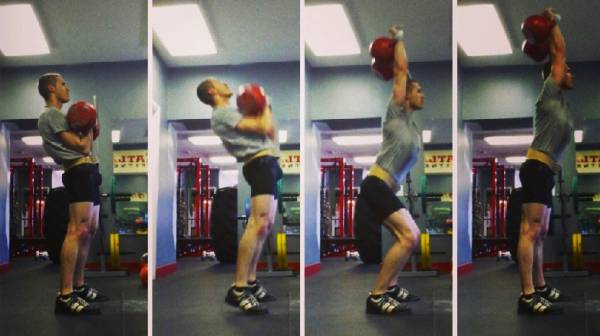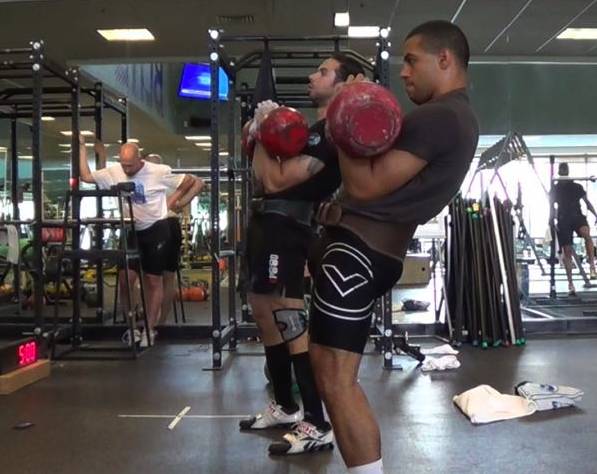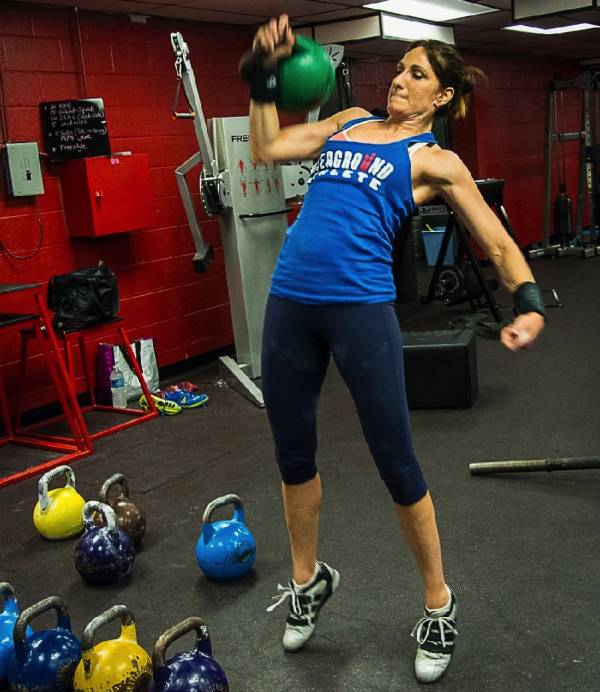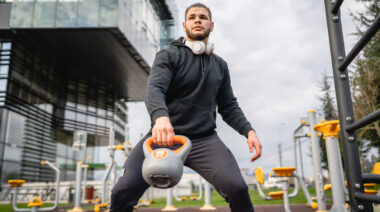Click Here to Start Your Free Kettlebell Sport Workouts
I treat kettlebell sport like another job. In fact, if you add up the total number of hours I spend training each week it would definitely qualify for at least a part-time position.
Click Here to Start Your Free Kettlebell Sport Workouts
I treat kettlebell sport like another job. In fact, if you add up the total number of hours I spend training each week it would definitely qualify for at least a part-time position.
But as an athlete, there’s more to your sport than just the actual physical preparation – the number of hours spent in the gym. There’s nutrition (both preparing and eating meals), supplementation, sleep, managing stress, tending to callouses, and mobility work. Then there’s also the research: reviewing footage of my lifts, critiquing my technique, watching other lifters, and reading relevant articles.
And after that there’s the fact that I’m just constantly thinking about it. I’ve practiced technique in front of mirrors in public restrooms, while waiting for food to microwave in office kitchens, and even while waiting for the metro. I call it “air jerking” and it looks as funny as it sounds.
You don’t ever really turn it off. Not an hour goes by without something reminding me of kettlebell sport. It’s the same way powerlifters, bodybuilders, CrossFit Games competitors, fighters, and other athletes think about their sports, too. Forget about half-assing it, you can’t even three-quarters-ass it and expect to win. You’ve got to be all in, all the time.
Sure, I’m definitely riding that edge of obsession. But remember, it’s more than just a hobby for me, more than just an activity that keeps me fit. I make my living as a trainer and coach, so it really is my job. So what does it look like to train for kettlebell sport?
Main Training Sets
The competitive events for kettlebell sport are jerk, snatch, and long cycle (clean and jerk (pictured below)). For the uninitiated, I think the easiest way to describe it is “endurance Olympic lifting with kettlebells.”
Divided by weight class, athletes lift a sub-maximal weight for ten minutes without stopping for as many reps as possible. Traditionally, an athlete competes in a biathlon of jerk and snatch, snatch only, or long cycle only. As a cyclical sport, the training methodologies resemble those of other endurance sports like running.
There are three core styles of training: competition style, repeats, and intervals.
Competition Style
One training set, ranging five to eight minutes, at a consistent or varied pace.
Example: Long Cycle: 32+32kg / 7:00 / 42 reps (6 reps per minute)
Here’s a quick guide to the notation:
Event: Kettlebell Weight / Time / Total Repetitions (Pace)
- Event: Long cycle (clean and jerk)
- Kettlebell weight: 32+32kg = two 32kg (70 lbs) kettlebells (This is an international sport – we use kilograms)
- Time: 7:00 minutes
- Total repetitions / pace: 42 reps @ 6 reps per minute
Repeats
Two or three sets of equal duration (between two to five minutes), with an unspecified rest period allowing the athlete to fully recover. Total training time should be close to ten minutes.
Example 1: 3 sets of long cycle: 32+32kg / 3:00 / 21 reps (7 reps per minute) – rest 5 to 8 minutes between sets as needed
Example 2: 2 sets of long cycle: 28+28kg / 4:00 / 36 reps (9 reps per minute) – rest 4 to 7 minutes between sets as needed

Intervals
Five to ten sets of equal duration adding up to ten minutes of total training time with a specified rest period. These high-intensity sets are typically at or close to anaerobic exercise.
Example 1: 10 sets of long cycle: 32+32kg / 1:00 / 8 reps – rest 1 minute between each set
Example 2: 5 sets of long cycle: 32+32kg / 2:00 / 15 reps (7-8 reps per minute) – rest 2 minutes between each set
How to Combine Styles of Kettlebell Sport Training
Just like in other endurance sports, the athlete’s result in each particular style of training is a good indicator of how well he or she will perform in competition without actually going the full distance. For example, marathon runners may typically run only up to twenty miles in training (only!), feeling confident they can finish the race from that point.
Similarly, it’s rare to go the full ten minutes with competition weight and pace in kettlebell sport training as such an intense effort would require an extended period of recovery. Additionally, these different training methods expose the athlete’s strengths or weaknesses. For example, an athlete who struggles with grip will have difficulties in competition-style sets.
Of course, these are not the only training methods used and it’s common to see a variety of times, weights, and paces implemented in any given workout depending on the athlete’s needs and goals.
In terms of frequency, three to four sessions per week are recommended. But it’s important that the athlete and coach remain flexible and sensitive to external stressors that could affect training.

Assistance Work for Kettlebell Sport
It can’t be all kettle all the time. Well, it doesn’t have to be and it’s nice to take a break and work with a barbell every now and then. While different coaches have different methodologies for their assistance work, one thing remains fairly consistent: high reps.
For lower body, squats and deadlifts are still top choices. Lighter weights and higher reps are favorable to build the muscular endurance specific to kettlebell sport. Yes, it’s awesome if you can deadlift 400 pounds, but that kind of strength doesn’t necessarily translate to more reps in the kettlebell snatch. Powerlifting requires different techniques and constant tension whereas the kettlebell sport athlete should focus on finding ways to relax.
Overhead press, bench press, pushups, dips, and pull ups are all great upper body exercise choices. But again, these movements might be adapted to better suit the goals of kettlebell sport. For example, using a close-grip hand position for the barbell movements to mimic the overhead position.
Lastly, there’s good ol’ fashioned cardio. Kettlebell sport is a unique endurance sport and traditional long slow distance (LSD) training is definitely a staple to build a strong aerobic base. So whether it’s running, cycling, swimming, rowing, or cross-country skiing, you need to do LSD.
How these exercises are implemented will depend largely on the athlete’s strengths and weaknesses, as well as where he or she is in the training cycle. So what lifters do after their main training sets when they are eight weeks out from competition will be vastly different from when they are just two weeks out.

Typical Kettlebell Sport Training Week
Putting it all together, here’s what a typical training week might look like for someone competing in long cycle with two kettlebells:
- Monday: Long cycle sets, upper body assistance work
- Tuesday: Running, 3-5 miles at moderate pace (optional)
- Wednesday: Long cycle sets, lower body assistance work
- Thursday: Running, 3-5 miles at moderate pace (optional)
- Friday: Long cycle sets, circuit training (various exercises, 10-15 minutes total)
- Saturday: Running, 5-7 miles at easy pace (optional)
- Sunday: Rest, yoga/mobility work
For those interested in kettlebell sport for fitness or for competition, it is highly recommended to find a reputable coach. Find someone with experience who can guide you through all aspects of the training such as gear, assistance work, pacing, recovery, and preparation.
While the rate of injury in kettlebell sport is low compared with other sports, it is important to learn proper technique and training progressions to ensure safe lifting. Training for kettlebell sport often results in increased lean muscle and fat loss as well as improvements in strength, conditioning, endurance, coordination, flexibility, joint health, and mental toughness.






